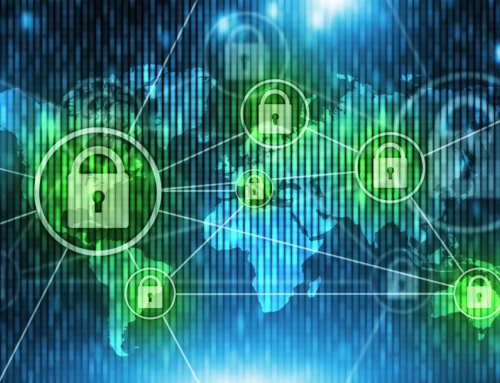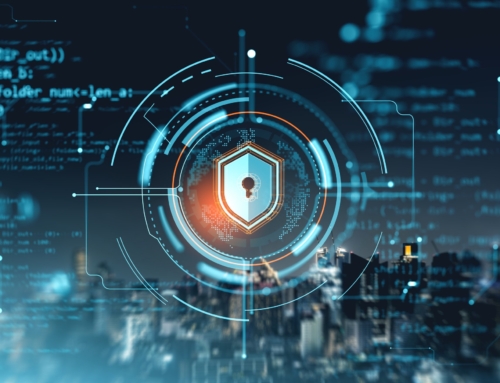Essential Ransomware Remediation Checklist for Business Security
Understanding the Gravity of Ransomware Attacks
In recent times, the threat landscape has evolved dramatically, with ransomware attacks emerging as one of the most sinister challenges facing businesses. These attacks can paralyze operations, compromise sensitive data, and result in substantial financial losses. We at Alvaka understand the urgency required to address ransomware threats effectively. We believe that the first line of defense against such assaults is a well-prepared ransomware remediation checklist. Rooted in our extensive experience in IT management and advanced network services, we develop response strategies that address the complexity and sophistication of modern ransomware attacks.
The Critical First Steps in Ransomware Response
The discovery of a ransomware attack is a critical moment that demands an immediate and informed response. Our team of IT management professionals is adept at initiating swift action to limit the spread and severity of the attack. A ransomware remediation checklist is more than just a reactionary tool; it is about proactive incident management. Using our checklist, we quickly identify the affected systems and commence the containment process, which is crucial for safeguarding your network integrity and business continuity.
Engaging Specialists for Initial Response
The expertise of IT management specialists becomes invaluable when a swift counteraction is necessary upon ransomware detection. Our team is experienced in the nuances of ransomware outbreaks, enabling us to implement targeted containment measures effectively. Access to advanced network services allows us to diagnose and respond to threats with precision, ensuring that the initial breach doesn’t escalate into a full-blown crisis.
Function of the Remediation Checklist
The well-crafted ransomware remediation checklist we have developed plays a pivotal role in our rapid response framework. It guides our actions step-by-step, ensuring that nothing is overlooked in the rush to mitigate the attack. This checklist is not static; it evolves in line with the latest threats and leverages cutting-edge strategies to stay one step ahead of cyber attackers.
Establishing an Effective Ransomware Remediation Plan
Preparation is the cornerstone of any robust cyber defense. An effective ransomware remediation plan, built on the foundation of our mastery in IT management and advanced network services, can be a game-changer. Our plan outlines the structured approach needed to not only respond to incidents but also to prevent them. The ransomware remediation checklist seamlessly integrates into this comprehensive strategy, enhancing our ability to protect, detect, and react to threats with unmatched efficiency.
Components of a Strong Remediation Plan
A well-conceived ransomware remediation checklist is comprised of several key elements—from initial detection and isolation of the threat to recovery and post-incident analysis. Each stage is meticulously designed to fortify the network and prevent future compromises. At Alvaka, our experts harness their deep knowledge of network infrastructure to ensure these components coalesce into a resilient remediation framework tailored to the specific needs of your organization.
Remediation Checklist Within Incident Response
Our ransomware remediation checklist is not an isolated tool but a core component of a broader incident response strategy. The intricate relationship between the checklist and the overarching response plan reflects our commitment to providing comprehensive security solutions. Our checklist serves as the blueprint for action, guiding our team through a series of deliberate and strategic steps to neutralize threats and restore normalcy as swiftly as possible.
Initial Containment and Analysis
Immediate Isolation Tactics
When faced with a ransomware attack, the speed of your response is crucial. Our first step, as outlined in our ransomware remediation checklist, is to isolate the impacted systems immediately. This action halts the lateral spread of the attack, protecting unaffected areas of the network. We shut down all infected machines, disconnect them from the network, and disable remote access. Our rapid response demonstrates the stringent protocols we enforce, minimizing the attack’s footprint.
Secure Communication Channels
After containment, it’s vital to establish secure lines of communication. This measure prevents threat actors from intercepting sensitive discussions. We shift to offline modes or utilize encrypted channels to coordinate our remediation efforts. Our experienced IT management team rigorously adheres to this practice, ensuring confidentiality and integrity during crisis management.
Ransomware Remediation Checklist Deployment
Our comprehensive ransomware remediation checklist is a cornerstone in analyzing and responding to the incident. With this structured approach, we meticulously capture and analyze ransom notes and identify the ransomware strain, using resources like advanced network services to pinpoint the attack vector. Our checklist enables us to swiftly engage in evidence preservation, facilitating a thorough investigation without compromising valuable data.
- Immediately disconnect infected systems from the network.
- Shut down all machines to stop ransomware activity.
- Preserve evidence and capture ransom notes.
- Identify the ransomware strain for targeted response.
- Keep detailed logs of all response activities for post-incident review.
Detailed Assessment for Strategic Planning
We delve into a detailed assessment to uncover the depth and impact of the breach. By meticulously scanning the network and all connected devices, our IT specialists work to identify any remaining footholds the attackers may have established. Furthermore, this process involves vetting backup integrity, assuring that recovery efforts won’t reintroduce the ransomware. In strategic planning, we leverage insights gathered to craft tailored recovery actions, drawing on our advanced network services for robust support.
Did you know? In a ransomware attack, the first step is to isolate infected systems to prevent further spread, just like containing a biological virus.
Sealing the Gaps: Post-Ransomware Remediation Protocols
In the aftermath of a ransomware attack, it’s crucial to not only address the immediate threats but to fortify your systems against future vulnerabilities. Our ransomware remediation checklist isn’t simply a reactionary tool; it’s a means to enhance your business’s cybersecurity posture long-term. We methodically analyze the breach, identifying points of entry and potential weaknesses in your infrastructure. This crucial step ensures that all vulnerabilities are patched and security controls are upgraded to safeguard against new strains of ransomware.
Comprehensive System Restoration and Recovery Efforts
With the immediate threat neutralized, we prioritize system restoration, using secured backups to recover encrypted data. Our robust ransomware recovery process ensures that no stone is left unturned, as we meticulously verify the integrity of each recovered file. We understand that a successful recovery is not just about bringing systems back online, but also about restoring the complete trust in the security and reliability of your IT environment.
Employee Education and Continuous Improvement
We view the remediation process as an ongoing educational opportunity. Empowering your team through training and awareness programs is critical to bolstering your defenses against future attacks. We provide tailored sessions to ensure that all employees understand the latest ransomware threats and are equipped with the knowledge to prevent breaches. Our commitment extends beyond mere response; we’re dedicated to fostering a culture of cybersecurity awareness throughout your organization.
Turning Challenges into Opportunities for Growth
Throughout the ordeal of a ransomware attack, we recognize the challenges businesses face. However, we also see it as an opportunity for growth and improvement. Our ransomware remediation checklist is instrumental in not only recovering from the current incident but also in preparing for a more secure future. We assist in developing stronger policies and practices that increase your resilience against digital threats, thereby transforming a difficult situation into a driving force for enhancement.
Building a Robust Partnership for Cybersecurity Resilience
At Alvaka, our relationship with your business is not seen as a one-time engagement, but rather as a long-term partnership. We are committed to staying ahead of cybersecurity trends, offering you advanced network services and insights that keep your data protected. By integrating our ransomware remediation checklist into your overall cybersecurity strategy, we help ensure that your business remains proactive, agile, and secure in an ever-evolving threat landscape.
Rising Stronger: Post-Ransomware Strategic Advancements
The journey through ransomware remediation concludes with a forward-looking mindset, ensuring your business is better positioned to sidestep future pitfalls. Our comprehensive ransomware remediation checklist plays a pivotal role in both addressing the present crisis and setting the stage for a safer cyber environment. At Alvaka, we are more than just your IT management team—we are your allies in forging a resilient, responsive, and robust IT fortress. By choosing us, you’re not just recovering from an attack; you are elevating your defenses to a new echelon of security readiness.
FAQ
1. What are the immediate steps we should take when a ransomware attack is detected? ▼
Upon detecting a ransomware attack, our immediate steps include disconnecting infected devices from the network, identifying the scope of the infection, and initiating our incident response protocol. We also advise contacting our IT management specialists to guide the remediation process and ensure proper containment.
2. Why is it important to have a ransomware remediation checklist? ▼
A ransomware remediation checklist is crucial as it provides a structured approach to responding to an attack. It ensures that no critical steps are overlooked during the heat of the moment, thereby reducing the attack’s impact on our business operations.
3. What should a ransomware remediation plan include? ▼
An effective ransomware remediation plan should include steps for containment, eradication, and recovery. It must also provide guidelines for communication, both internally and with external stakeholders, and incorporate continuity plans to maintain essential business functions.
4. How does a ransomware remediation checklist fit into a broader incident response strategy? ▼
Our ransomware remediation checklist is an integral component of our broader incident response strategy. Furthermore, it ensures that we respond to ransomware consistently and efficiently and helps in the transition from initial containment to full recovery.
5. How can we assure that our network’s isolation of the infected systems is effective? ▼
We can assure effective isolation by immediately disabling network access for infected systems, segregating them onto a separate network if possible, and closely monitoring network traffic. Engaging with advanced network services is also essential in verifying isolation and preventing the spread of the ransomware.
6. Should we involve law enforcement in the event of a ransomware attack? ▼
Yes, it is recommended to involve law enforcement following a ransomware attack. They can offer valuable assistance and may provide insights or resources that can help in the investigation and remediation of the attack.
7. What kind of backups are essential for recovery from ransomware? ▼
Having secure, offsite backups that are not connected to our main network is essential. These backups should be regularly tested and updated to ensure we can restore our systems to a pre-attack state with minimal data loss.
8. How do we handle communication with stakeholders during a ransomware attack? ▼
Communication during a ransomware attack must be clear, timely, and factual. We must designate a communication team to manage messaging and provide regular updates to employees, customers, and partners as appropriate while ensuring confidentiality and compliance with all regulations.
9. How long does it typically take to recover from a ransomware attack? ▼
Recovery time from a ransomware attack varies based on the attack’s severity, our preparedness, and the effectiveness of our incident response. With a robust remediation checklist and a skilled IT management team, we aim to minimize downtime and restore operations as quickly as possible.
10. What measures can we take to prevent future ransomware attacks? ▼
To prevent future ransomware attacks, we implement strong cybersecurity practices that include employee training, regular security audits, application whitelisting, timely patch management, and adopting advanced network services for continuous monitoring and threat detection.








 Smoke testing is a term used to describe the testing process for servers after patches are applied.
Smoke testing is a term used to describe the testing process for servers after patches are applied.  This is a basic cost calculator for you to compute your typical monthly cost for patching your servers, PCs, laptops, tablets and associated application software. It also forms the basis for you to begin calculating your Return on Investment for software patching, or for comparison with alternatives to the manual process of patching operating systems and application software—such as Patch Management as a Service, also known as Vulnerability Management as a Service.
This is a basic cost calculator for you to compute your typical monthly cost for patching your servers, PCs, laptops, tablets and associated application software. It also forms the basis for you to begin calculating your Return on Investment for software patching, or for comparison with alternatives to the manual process of patching operating systems and application software—such as Patch Management as a Service, also known as Vulnerability Management as a Service.